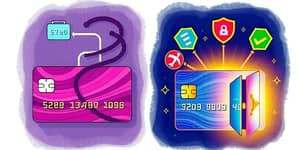Life can deliver unexpected twists—a sudden medical bill, a lost job, or a car breakdown—and without preparation, these surprises can derail your finances and your peace of mind. An emergency fund stands as your financial lifeline, providing security when you need it most.
This article explores everything you need to know about creating and maintaining an emergency fund, from understanding its purpose to practical steps you can take today. By the end, you’ll feel empowered to protect your future with confidence and discipline.
Understanding Emergency Funds
An emergency fund is more than just spare change; it’s a dedicated savings account or cash reserve set aside to cover unplanned expenses. These might include job loss, medical emergencies, major home or auto repairs, or urgent travel to care for family members.
Unlike savings for a vacation or a new gadget, funds in this account are strictly reserved for genuine emergencies. By defining clear criteria for what constitutes an emergency, you avoid the temptation of dipping into these funds for nonessentials or impulse purchases.
Why an Emergency Fund Matters
Establishing a robust emergency fund offers far more than just quick access to cash. It reduces reliance on high-interest credit cards or payday loans, and it prevents you from raiding retirement accounts or other long-term savings when the unexpected strikes. Most importantly, it delivers peace of mind during uncertain times.
- Provides a safety net during financial hardship
- Avoids high-interest debt traps
- Reduces stress and anxiety
- Preserves long-term financial goals
- Empowers major life decisions without fear
How Much Should You Save?
Financial experts typically recommend saving between three and six months’ worth of your essential living expenses. For instance, if you spend $2,000 monthly, aim for a fund of $6,000 to $12,000. If you’re just starting, a smaller starter fund of $500 to $1,000 can cover urgent bills while you build toward your full goal.
The ideal target varies based on household size, job stability, and income patterns. Self-employed or seasonal workers may require a larger buffer, while dual-income couples might reach their goals more quickly.
Data from 2019 shows the average American emergency fund is about $8,863—only 2.3 months’ worth of expenses—while many households struggle to cover even $400 in an emergency.
Building Your Emergency Fund Step by Step
Launching your emergency fund may seem daunting, but you can make meaningful progress with consistent action. Start small and build momentum by incorporating these strategies into your routine.
- Set a realistic savings target based on your monthly budget.
- Open a separate, easily accessible savings account.
- Automate savings with direct deposits or scheduled transfers.
- Add any unexpected income—bonuses, tax refunds, or gifts—to the fund.
- Increase contributions gradually as your finances improve.
- Review your progress monthly and adjust your plan as needed.
Where to Keep Your Emergency Fund
Accessibility is key: you need funds available within days if an emergency arises. Consider placing your fund in a high-yield savings or money market account rather than a checking account or long-term investment vehicle.
- High-yield online savings accounts with competitive interest rates
- Money market accounts offering both liquidity and modest returns
- Separate account to avoid the temptation of everyday spending
Maintaining and Replenishing Your Fund
Using your emergency fund when true crises occur is appropriate—but always rebuild it swiftly. Treat replenishment as a top financial priority, adjusting your monthly budget to restore your safety net.
Regularly revisit your fund’s target to reflect changes in expenses, income, or family circumstances. This disciplined approach ensures that your cushion never falls below the level needed to protect your financial well-being.
Final Thoughts
Creating an emergency fund is an act of self-care and foresight. It transforms uncertainty into security, enabling you to navigate life’s unexpected challenges with confidence. By following clear steps—setting goals, automating savings, and choosing the right account—you build a powerful tool for resilience.
Remember, the journey to a fully funded emergency reserve begins with a single deposit. Take that step today and pave the way toward financial freedom and lasting peace of mind.
References
- https://www.nerdwallet.com/article/banking/emergency-fund-why-it-matters
- https://investor.vanguard.com/investor-resources-education/emergency-fund/why-you-need-one
- https://www.mycvcu.org/blog/importance-of-building-an-emergency-fund
- https://www.1stunitedcu.org/more-for-you/financial-wellness/four-reasons-emergency-funds-are-important
- https://www.investopedia.com/terms/e/emergency_fund.asp
- https://www.financialsamurai.com/the-average-emergency-fund-size-by-age/
- https://www.merchantsbank.com/blog-articles/understanding-the-importance-of-an-emergency-fund
- https://corporatefinanceinstitute.com/resources/wealth-management/emergency-fund/










